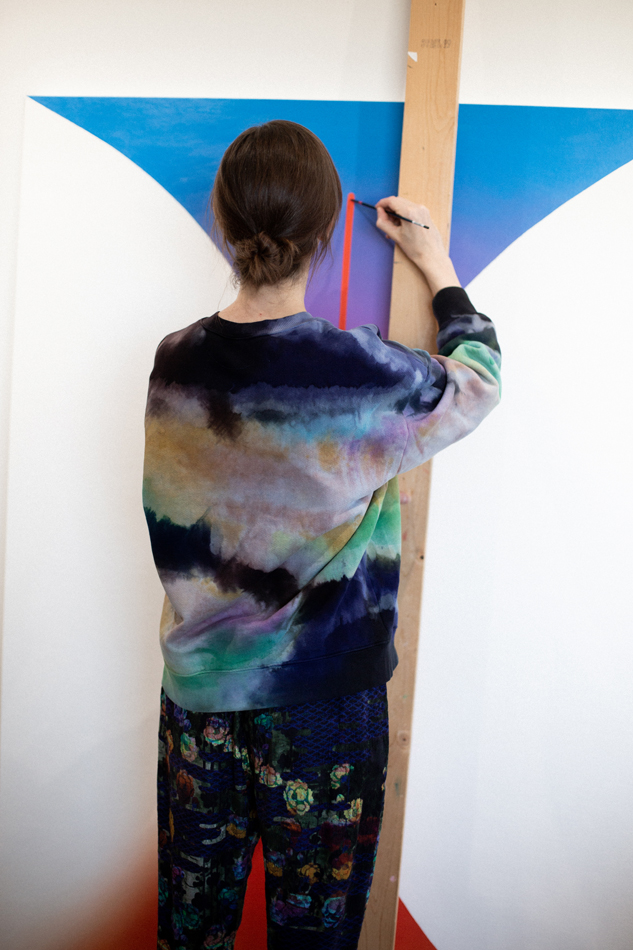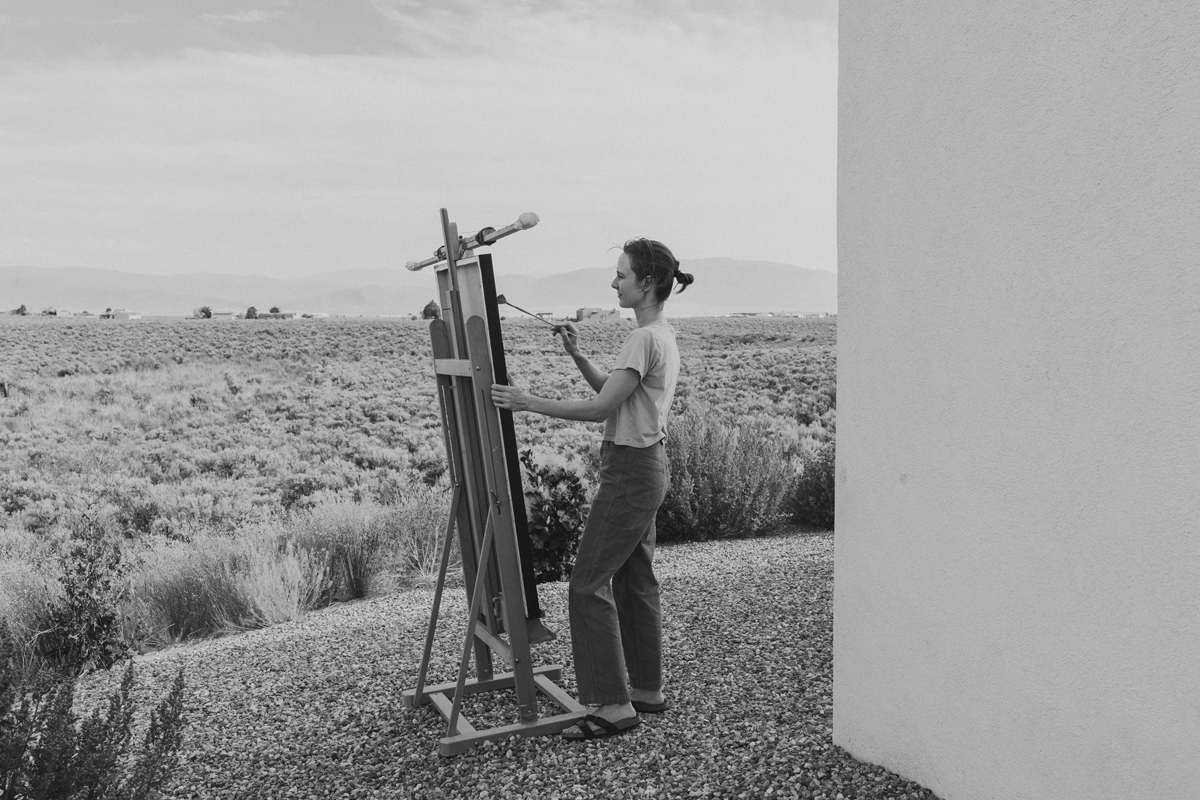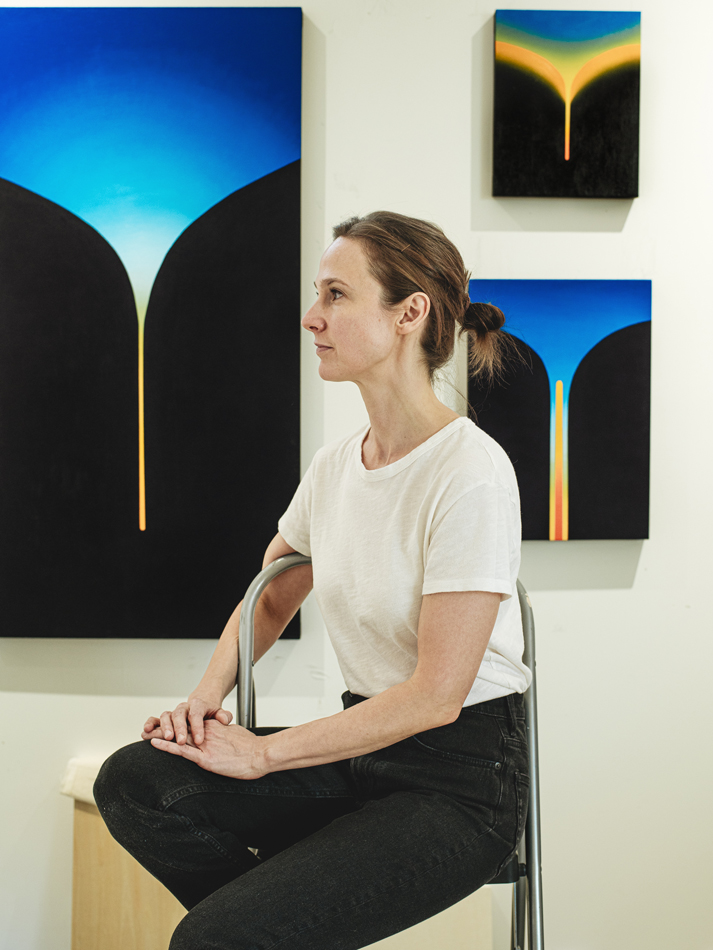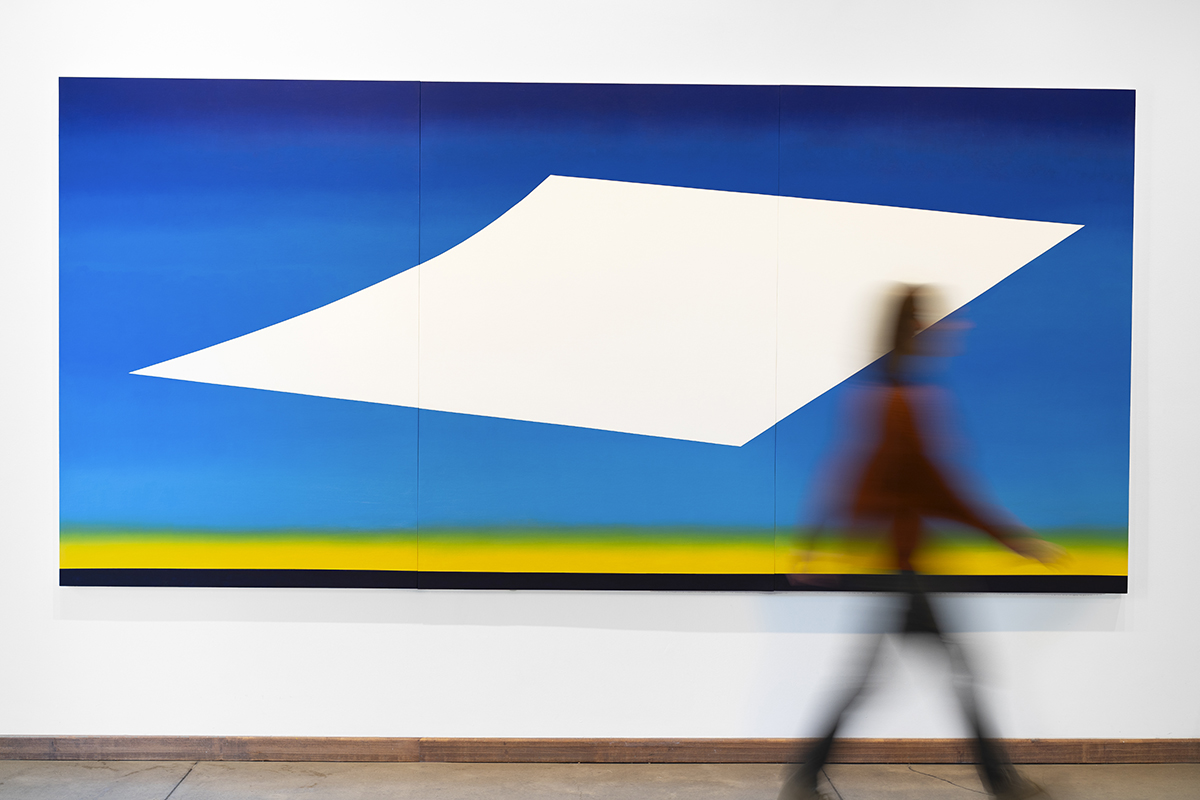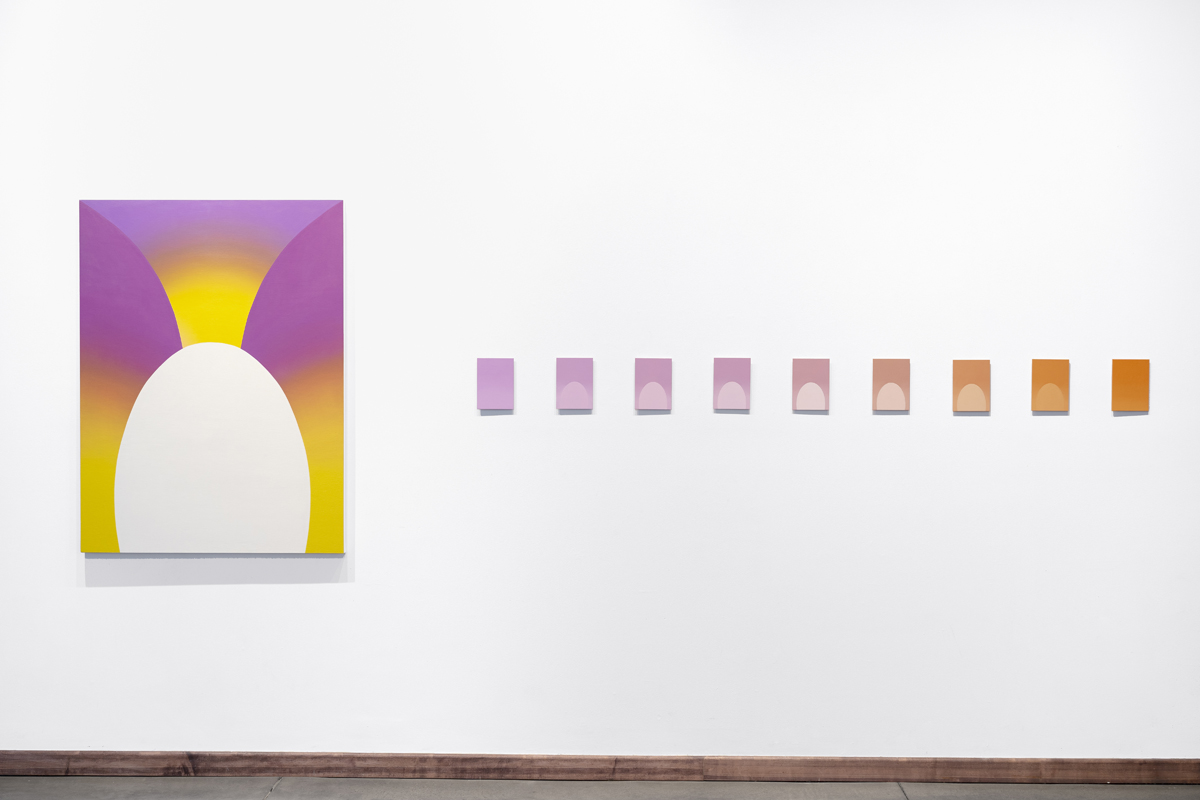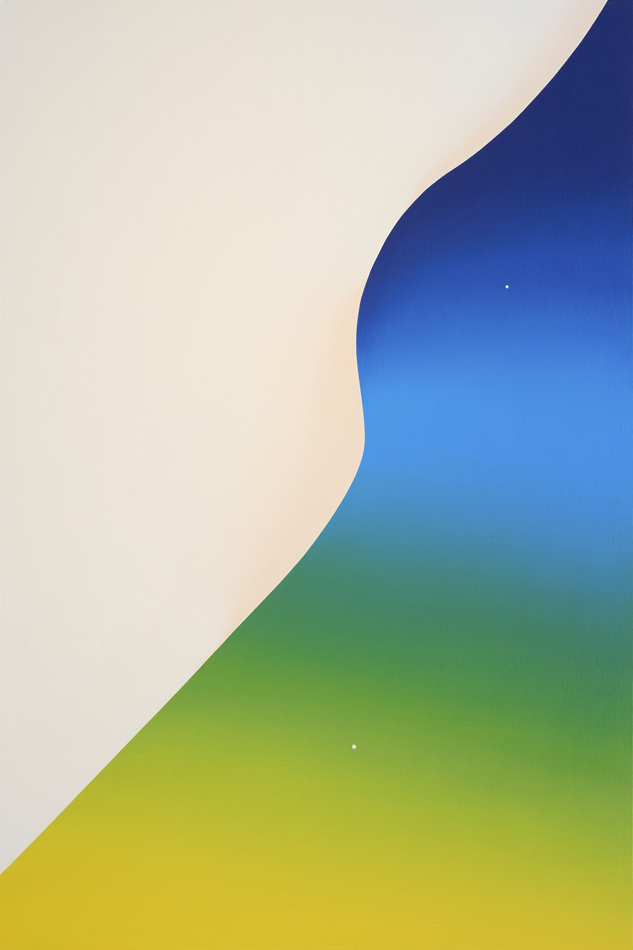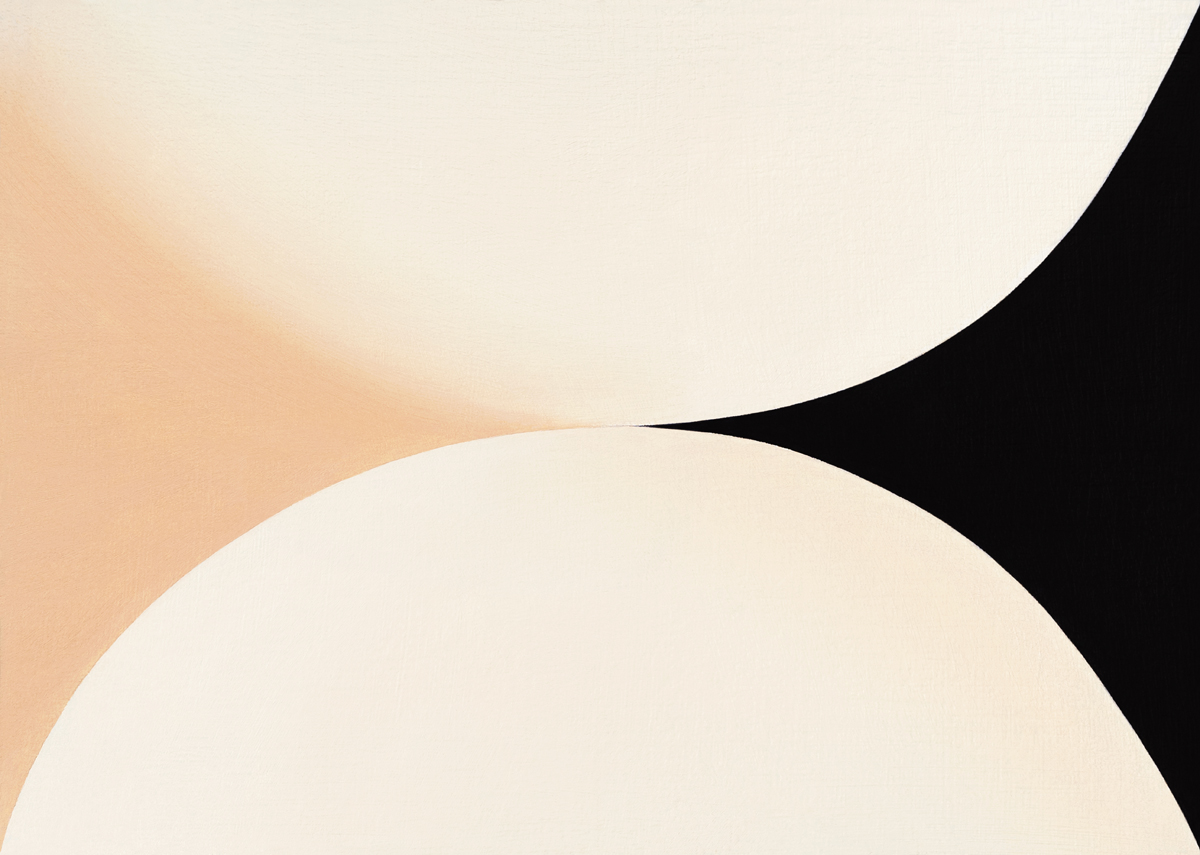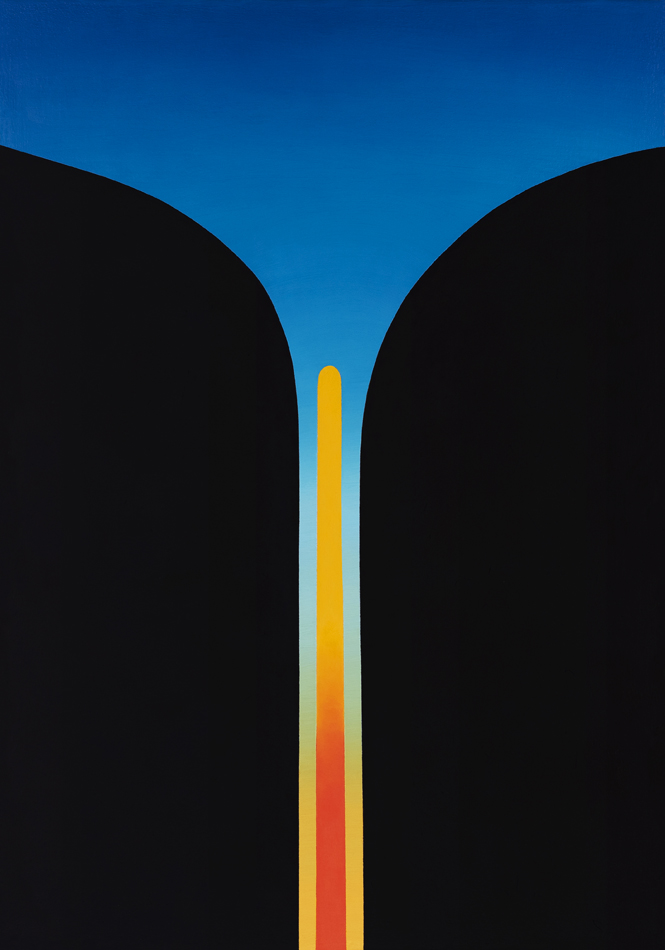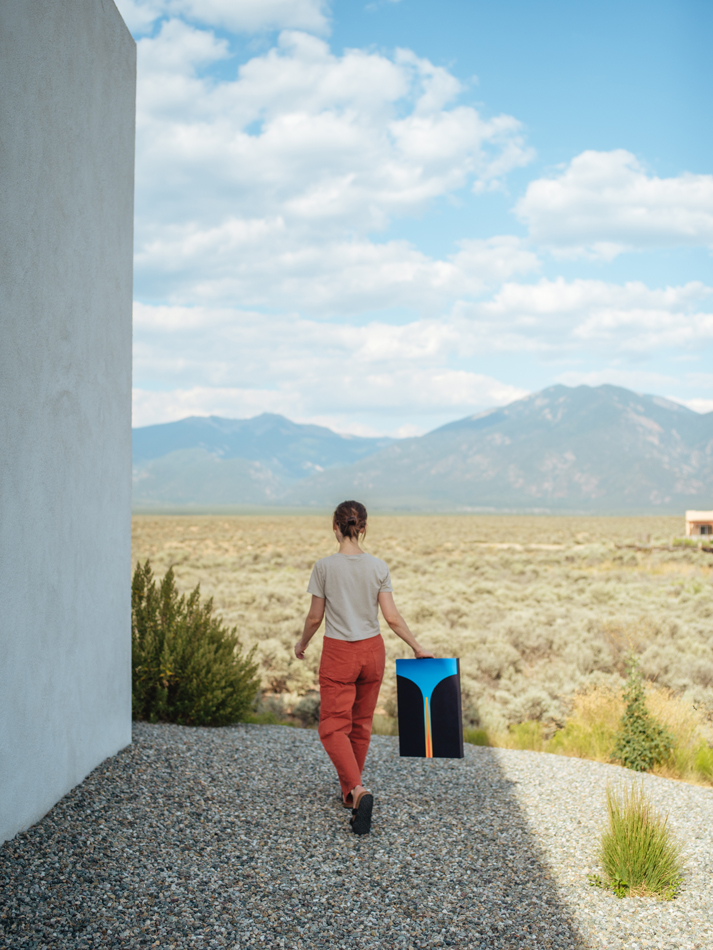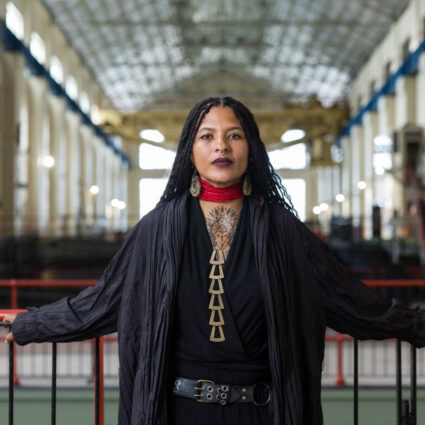Raised on art and transcendental meditation, Taos-based artist and collectivist Aleya Hoerlein paints beyond this world.
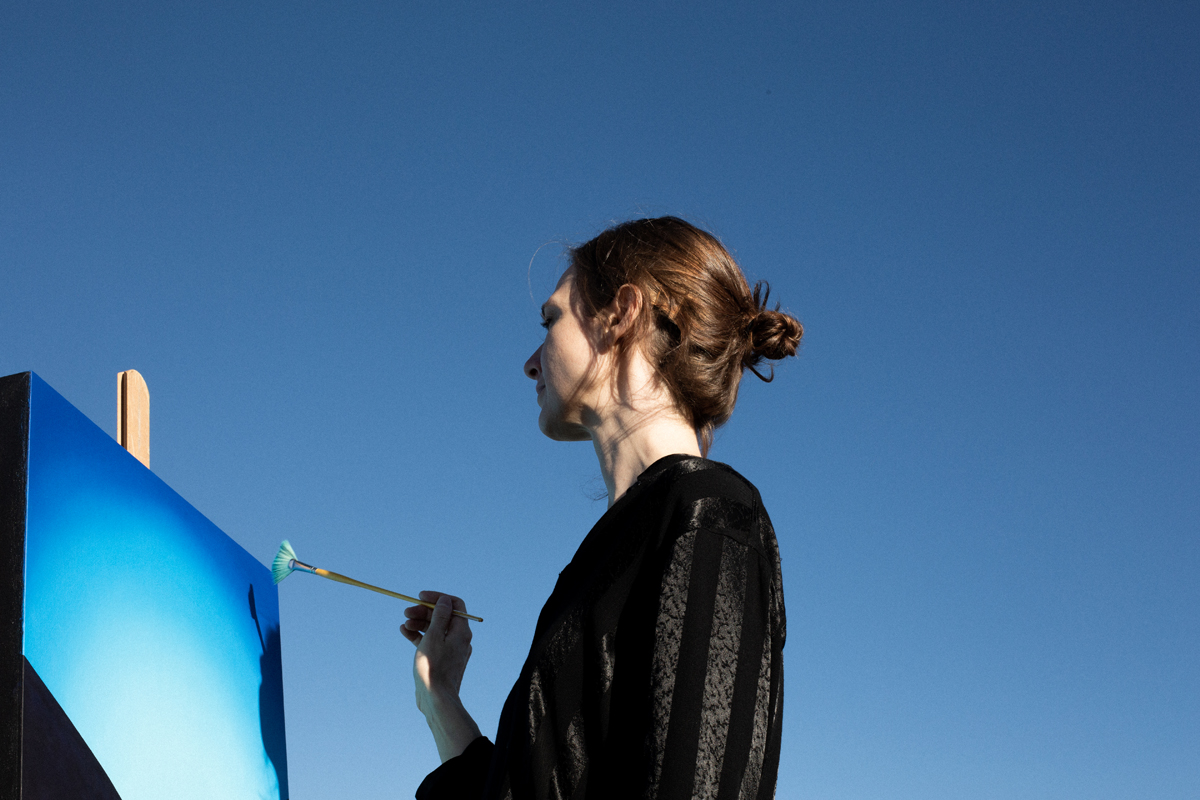
Aleya Hoerlein is a semi-abstract painter based in Taos, New Mexico, whose work intricately weaves the vast landscapes surrounding her with the spiritual influences of her upbringing. The region’s mountains, mesas, storms, and vibrant sunsets lend themselves well to metaphors of transcendence. In Hoerlein’s unique approach, concrete and metaphysical spaces coalesce to tell stories of momentary connections and passing time. Her art extends an invitation not merely to observe, but to journey through the vast expanse of our collective psyche, via landscapes that compel us to feel and imagine beyond the confines of the canvas.
An aspect of Hoerlein’s work is the use of shapes that almost touch but remain separate, symbolizing intimacy and distance. “I started painting with these motifs in 2020 during the first months of the pandemic,” she reflects. “We were all in this together, but separately.” This theme, borne from her personal experiences during a global crisis, resonates with the universal human condition. Hoerlein’s color swatches, meticulously arranged, are a testament to her methodical approach. She works cyclically, on multiple canvases at once, such that each grouping of artworks takes a long time to complete, but they all bloom in unison.
Hoerlein’s artistic path began in childhood when creativity and spirituality intertwined. Raised in Fairfield, Iowa, in a family of artists and a community dedicated to transcendental meditation, she was immersed in an educational environment that embraced deep reflection alongside courses in creativity, philosophy, and astrophysics. Her parents, both artists, were her first guides into the rich, textured world of oil painting. And today, as a cofounder of the Taos Abstract Artist Collective, Hoerlein plays a crucial role in her local art community.
On Thanksgiving Day of 2023, Hoerlein welcomed my daughter Uma into the warm embrace of her household. Rumi, the artist’s daughter, was a whirlwind of excitement, her eyes sparkling as she introduced Uma to a corner set up just for them that was brimming with art supplies. While the girls embarked on a crafting adventure, their vibrant energy aligned with that of Hoerlein and myself as we transitioned from the family space into her white-walled studio. There, a blend of finished and in-progress canvases featuring pastel blues, coral pinks, and bright yellows punctuated the tranquil ambiance.
Your work is deeply influenced by the Southwestern landscape and your upbringing in a spiritual community. How do these elements specifically shape your artistic approach and the themes you explore in your paintings?
I was raised in Fairfield, Iowa, by a creative family, in a spiritual community that practiced transcendental meditation. Magical thinking was welcomed. My parents are both artists and art-making was a way of life in our house; my dad taught me to use oil paints when I was a kid.
The way I grew up still influences my studio practice and the themes I explore, intentionally and subconsciously. I paint abstract compositions subtly based on the theme of transcendence, as well as observations from nature. The Southwest has wide-ranging views of mountains, mesas, storms, and vibrant sunsets, and the landscape lends itself well to metaphor.

Throughout your career, you’ve transitioned from painting representational work to a more abstract focus. Could you describe this evolution and what prompted this significant shift in your artistic expression?
I transferred in and out of several colleges and studied life drawing, and other foundational classes, before that shift to abstract painting began. In 2000 I moved to New York City and attended a summer drawing, painting, and sculpture intensive at the New York Academy of Art, a university that specializes in representational figurative work. It was a great learning experience, but the narrow focus made me crave more experimentation, and I transferred to the School of Visual Arts, which welcomed that.
At SVA, I took painting classes, and during the open studio time, we could paint anything we wanted. Out of habit, I scheduled [a session with a live] model, but I tried abstracting the figure and the room in the painting, and it kind of lacked an opinion. During a critique, my classmate, abstract artist Yehudit Feinstein, mentioned that I seemed more interested in painting the atmosphere around the figure than the figure itself, and asked if I’d considered switching to abstract painting. In my next painting, abstract shapes replaced the figure, and I’m still painting abstractly today.
In your artist statement, you talk about balancing abstract elements with references to the observable world. How do you find the right equilibrium between these two in your work?
The equilibrium can be balanced more towards abstraction or to the observable world in any given series, and that’s based on what I’m currently thinking about. My last series and first solo exhibition, The Realm of Possibilities, was [recently] on view at the Encore Gallery at Taos Center for the Arts. This series was directly inspired by the observable world, specifically the colors of the Taos sunset, but also the idea of existence or experience beyond the physical level.
While painting the series, I spent a lot of time observing the different colorful phases of the sunset from the beginning of it to the moment before the sun has officially set. That informed the palette for the series, but the abstract shapes and compositions are informed by the feeling in the air during [a] sunset that is almost otherworldly. There’s a fleeting moment where the end of today meets the beginning of tomorrow, where time and space feel infinite, and anything feels possible.
Your paintings often feature shapes that come close but do not touch, creating a sense of tension and longing. What do these recurring motifs symbolize in your work?
Intimacy and distance. I started painting with these motifs in 2020 during the first months of the pandemic when people were quarantined, practicing social distancing, and standing six feet apart from each other. We were all in this together, but separately. I was home on maternity leave, having had my daughter in April, and quarantine gave me and my husband an incredible opportunity to spend all of our time with her, and yet we were also longing to introduce her to friends and family. I was painting from that experience, and now, going forward, the shapes are always in some kind of relationship with each other.
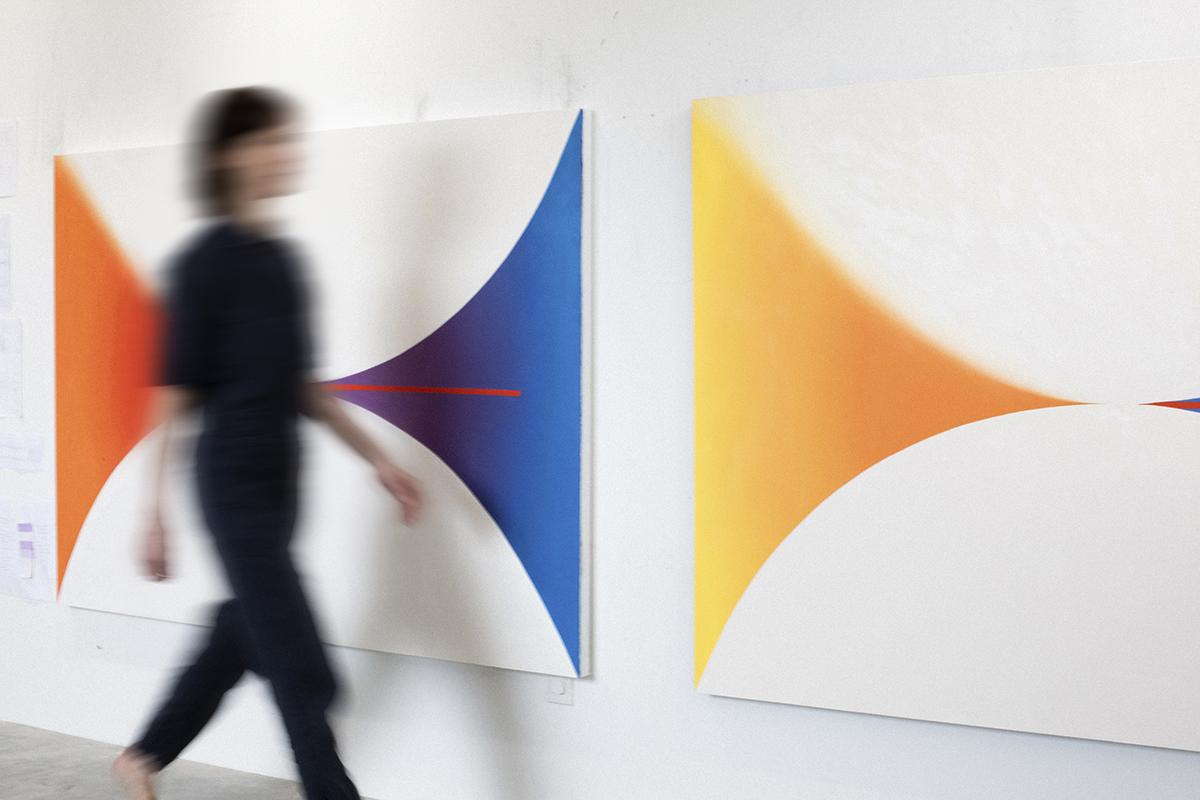
You’ve mentioned that you work intuitively, especially in the initial stages of your paintings. Can you walk us through a typical day in your studio and how an idea evolves from a concept to a finished piece?
A typical day starts with me making a piping hot cup of coffee, and then finding some low-hanging fruit to accomplish–things like reading emails and looking at my paintings to figure out what needs to happen next. Once the caffeine kicks in, I start with the most challenging or time-consuming projects—things like color gradient blends or line work in the paintings, mixing new colors and filling empty tubes with paint, or preparing new art panels. With all of the paintings in progress at the same time, it takes me about a year to complete a series.
I spend almost every day working in the studio when there’s a deadline, but then I need to take a little break because most of my ideas happen when I’m doing something else. The ideas come when I’m taking a walk, doing yoga, or sketching in a notebook on the couch, and then I develop those ideas further when I’m back in the studio. I have several sketchbooks stashed around the house for those moments. Intuition plays a role in deciding what ideas are worth pursuing, and I see the colors right away with the composition I’m imagining.
As a co-founder of the Taos Abstract Artist Collective, how do you see your role in the local art community? What do you think is the importance of such collectives in the broader art world?
It was a wonderful opportunity to help conceptualize the Taos Abstract Artist Collective with Lauren Dana Smith and Kari Bell. Taos has a rich history of [collectivized] artists from the Taos Pueblo, to the Taos Society of Artists, to the Transcendental Painting Group, to the Taos [Moderns], and yet in 2020 there were limited options for exhibiting the work of contemporary abstract artists. The pandemic brought even more artists to Taos, so we began the collective to offer new opportunities and with a core value of inclusivity.
TAAC [held] an inaugural exhibition at Taos Center for the Arts in 2022, with more than sixty Northern New Mexico-based abstract artists represented. Last year TAAC became a nonprofit, had a guest curated exhibition of abstract minimalism, [and] began collaborating with local museums like the Harwood Museum of Art and the Couse-Sharp Historic Site where the Taos Society of Artists began.. […] Our second call for art yielded more than twice as many submissions as the first. Artist collectives build opportunities and strengthen communities, and the broader art world benefits from more diverse offerings.
Looking forward, what new challenges or projects are you excited about? Are there any new directions or mediums you are eager to explore in your future work?
I’m in the early stages of planning an exhibition for Indian Hills Community College in Ottumwa, Iowa. They have a campus art gallery that is a repurposed chapel. There are some logistical challenges to think through, but it presents an exciting opportunity to work in an unusual space. I’ll take some time to sketch and imagine possibilities for visuals and themes, and I’ll experiment with techniques and colors to move the work in new directions.
